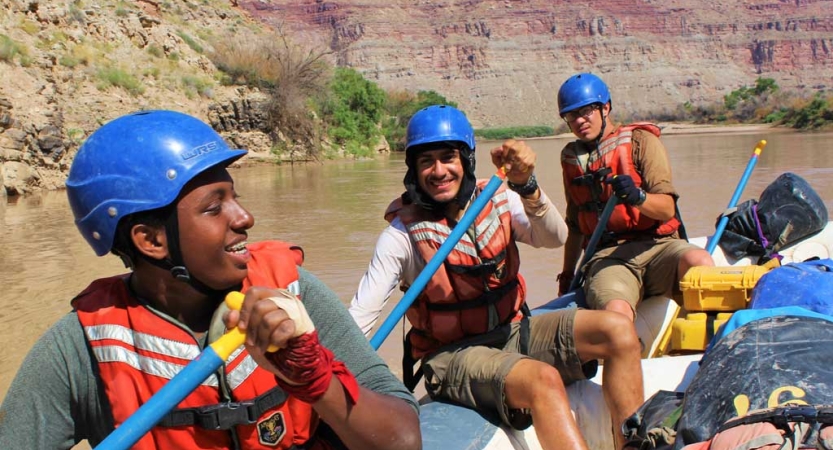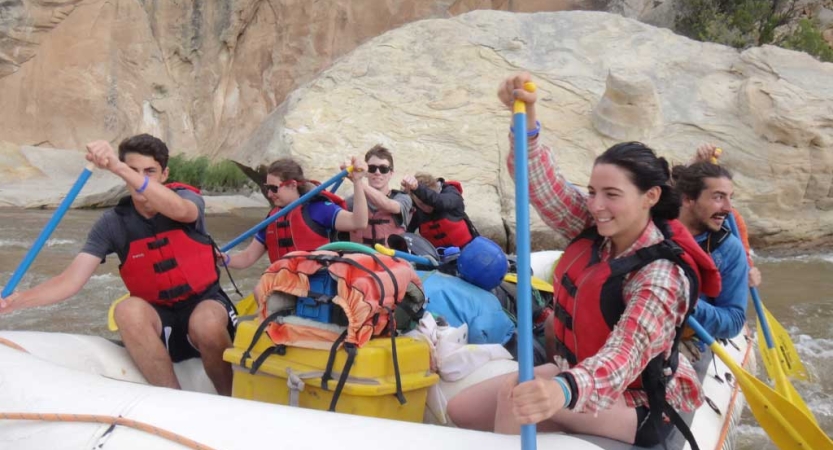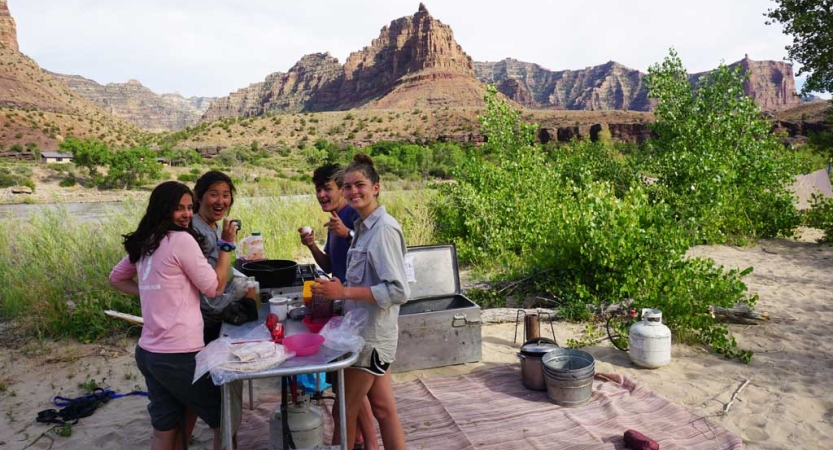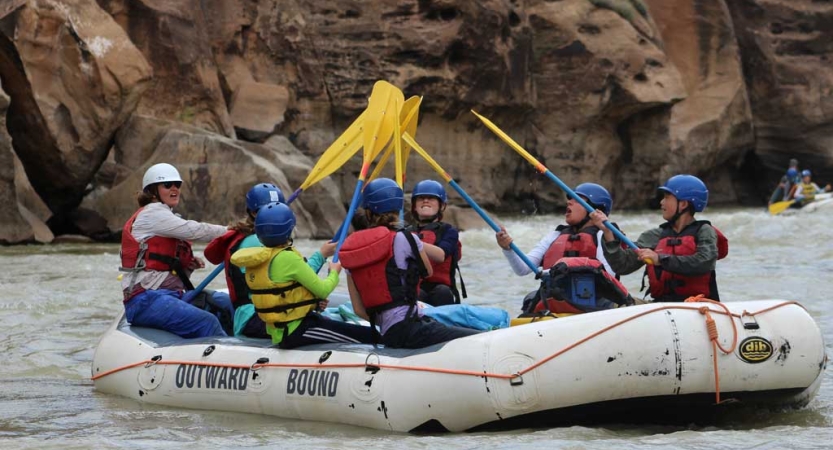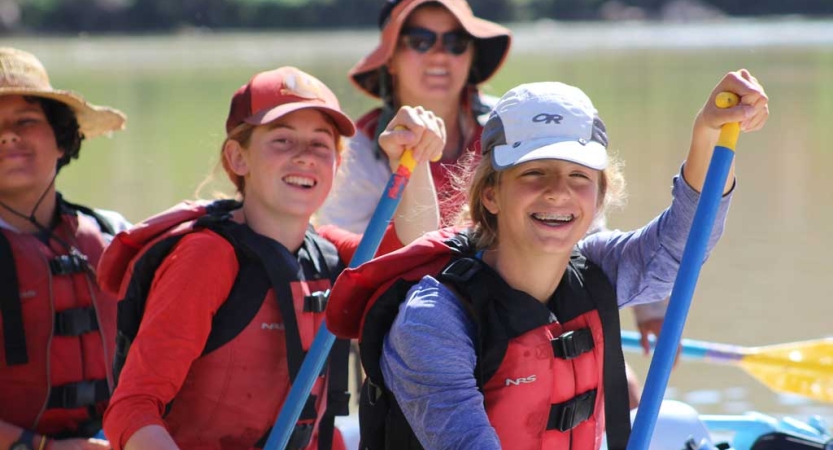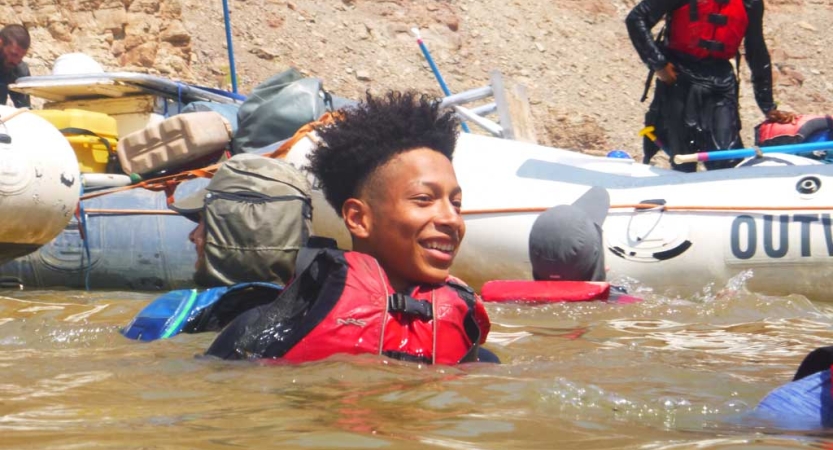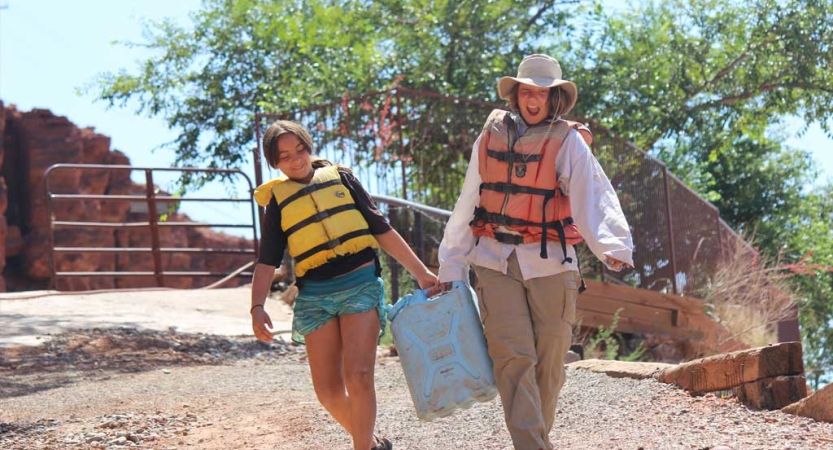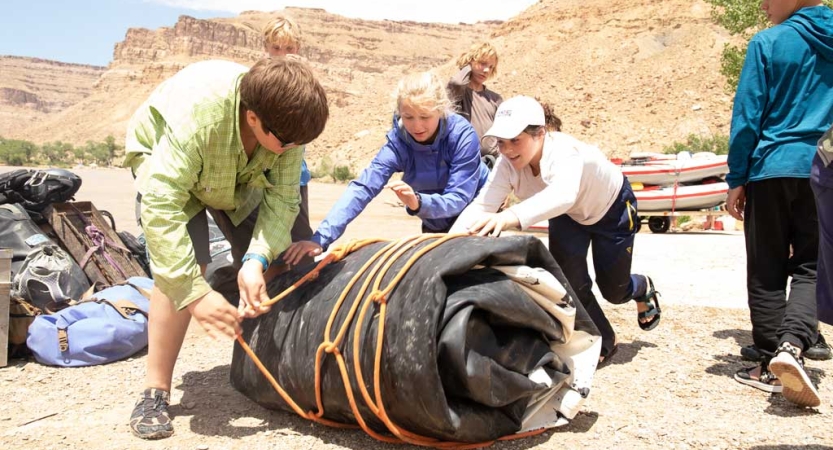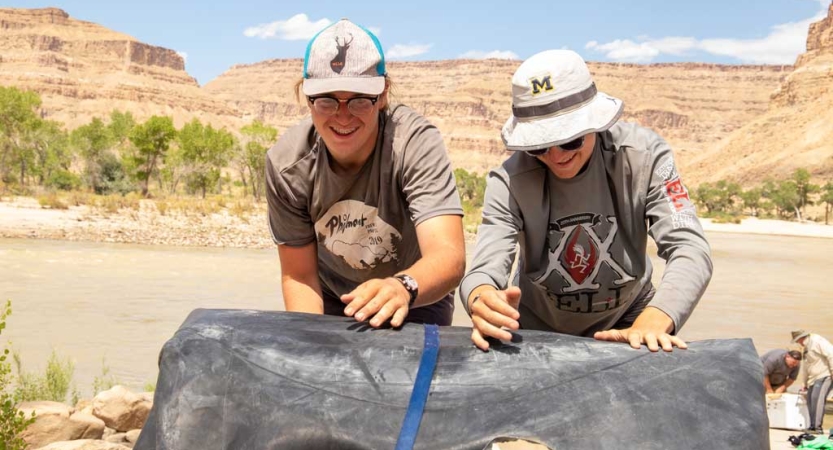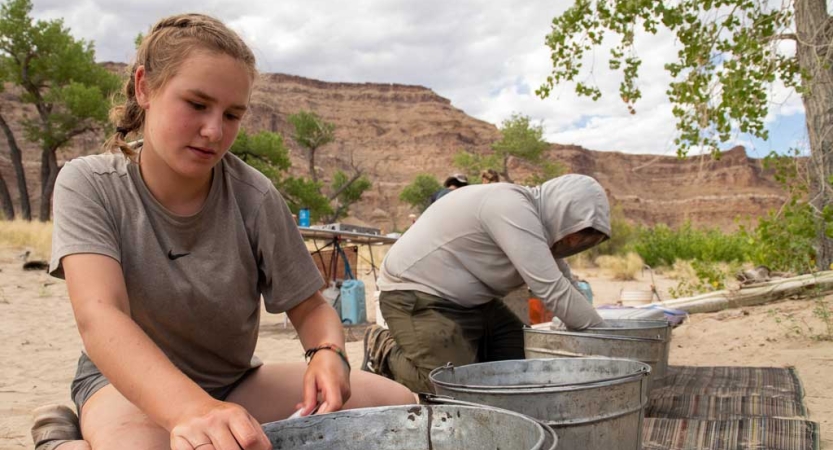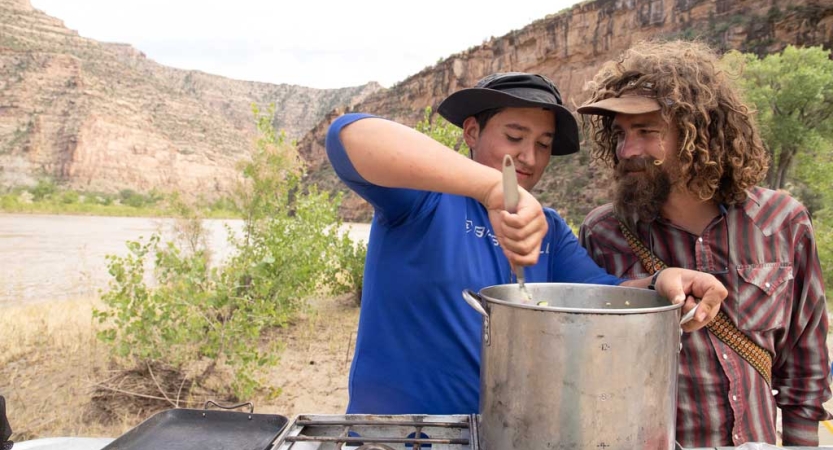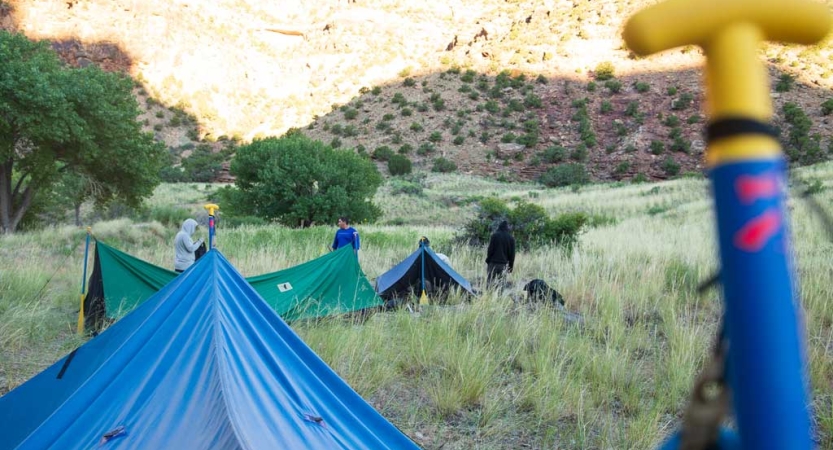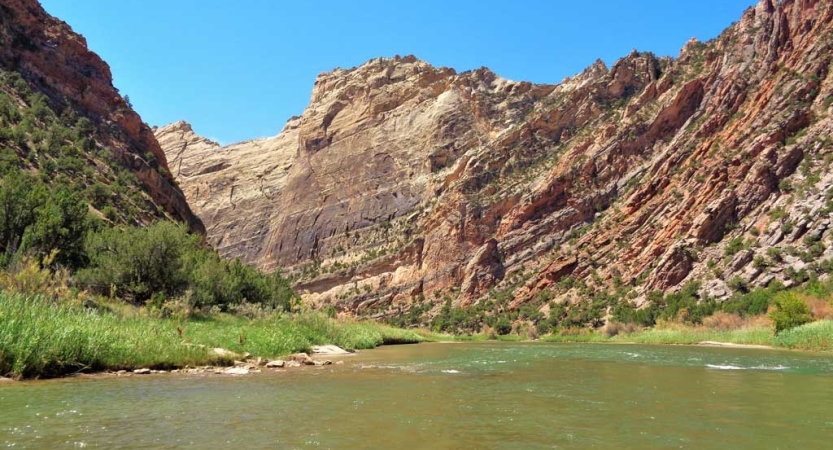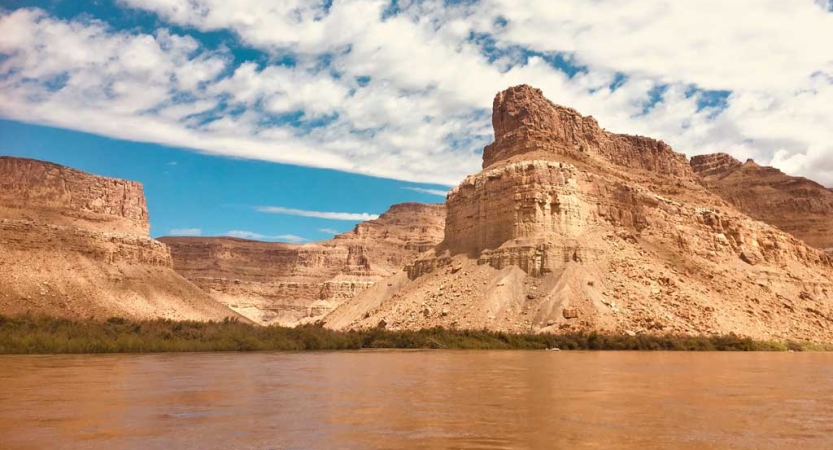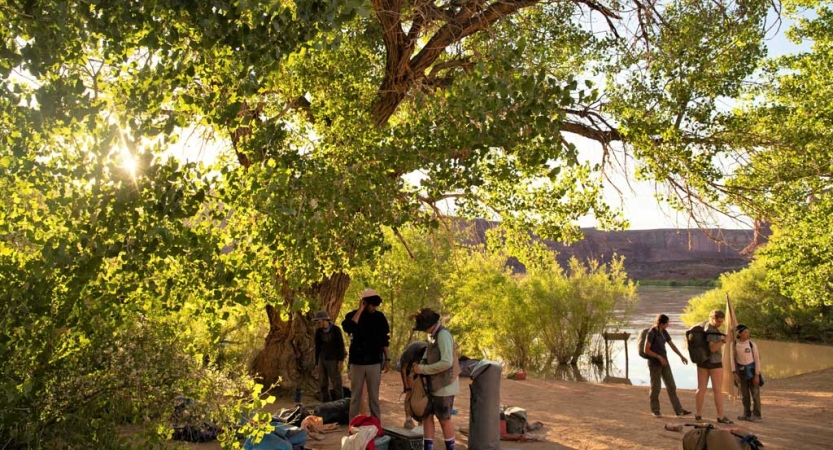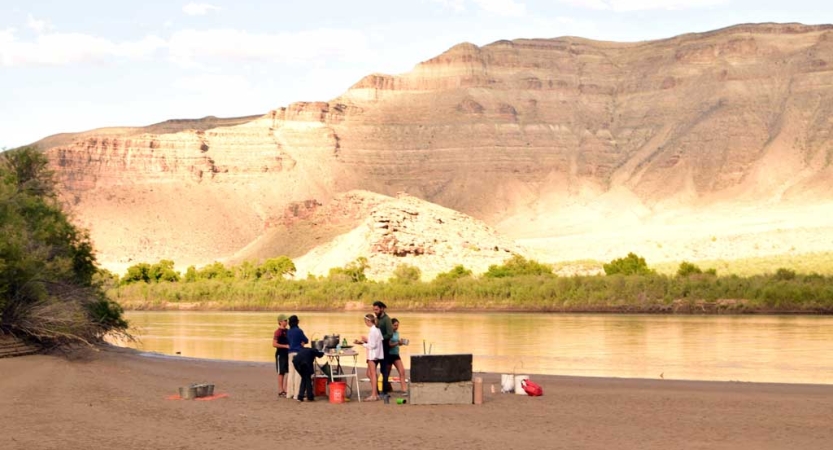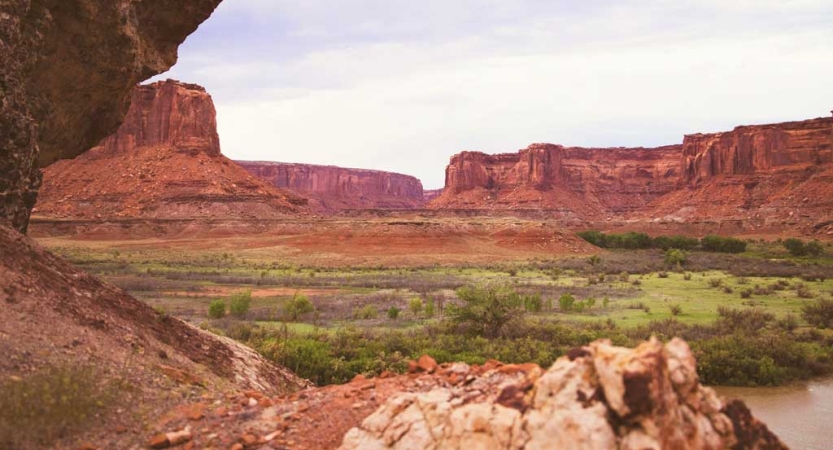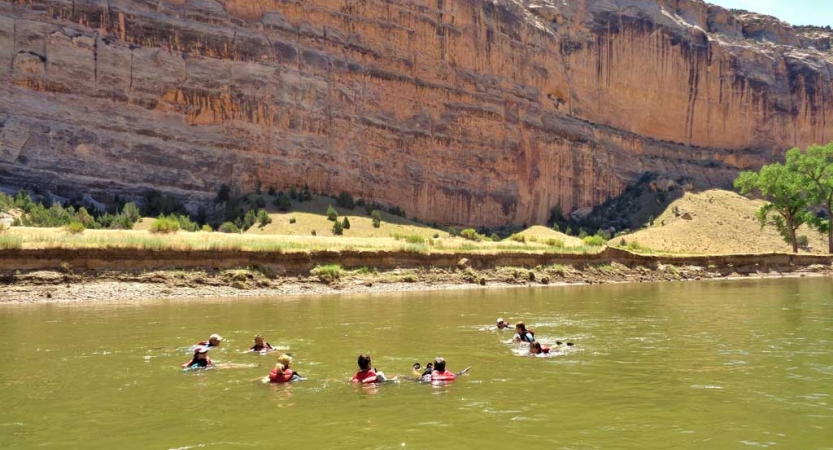-
EXPEDITIONS
-
Southwest Rafting
-
Potomac River Canoeing
-
Water Gap Backpacking, Canoeing & Leadership
-
High Sierra Backpacking & Rock Climbing for Boys
-
Maine Sailing & Backpacking
-
Water Gap Backpacking, Canoeing & Leadership
-
Boundary Waters Canoeing
-
Southwest Rafting & Canoeing
-
High Sierra Alpine Backpacking & Rock Climbing for Adults
-
Boundary Waters Canoeing for Adults
-
Blue Ridge Mountains Backpacking & Rock Climbing for Adults
-
Yosemite Backpacking for Adults
-
Pathfinder Boundary Waters Canoeing & Backpacking
-
Pathfinder Southwest Canyoneering & Rafting
-
Pathfinder Blue Ridge Mountains Backpacking, Whitewater Canoeing & Rock Climbing
-
Pathfinder Rocky Mountains to Canyonlands
-
Blue Ridge Mountains to Florida & Patagonia Leadership Semester
-
Maine to Bahamas Leadership Semester
-
Canyonlands to Joshua Tree Leadership Semester
-
Costa Rica and Panama Leadership Semester
-
High Sierra Backpacking & Rock Climbing for Boys
-
Blue Ridge Mountains Backpacking & Rock Climbing for Families
-
High Sierra Alpine Backpacking & Rock Climbing for LGBTQ+ Teens
-
Ten Thousand Islands Sea Kayaking for Veterans
-
Blue Ridge Mountains Backpacking & Rock Climbing for Women Veterans
-
Ten Thousand Islands Canoeing for Veterans
-
Backpacking
-
Canoeing
-
Canyoneering
-
Dog Sledding
-
Mountaineering
-
Rafting
-
Rock Climbing
-
Sailing
-
Sea Kayaking
-
Service
-
Snow and Ice
-
EXPEDITION FINDER
CLASSIC FOR MIDDLE SCHOOL
FEATURED CLASSIC FOR MIDDLE SCHOOL
FEATURED CLASSIC FOR HIGH SCHOOL
FEATURED CLASSIC FOR ADULTS
FEATURED PATHFINDER
FEATURED SEMESTER
FEATURED OUTDOOR EDUCATOR
OUTDOOR EDUCATOR OVERVIEW INTERCEPTFEATURED INTERCEPT
INTERCEPT OVERVIEW AFFINITY GROUPSFEATURED AFFINITY GROUPS
FEATURED VETERANS
FEATURED ACTIVITIES
FEATURED SCHOLARSHIPS & ACADEMIC CREDIT
SCHOLARSHIPS & ACADEMIC CREDIT OVERVIEW PLANNING COMMUNICABLE DISEASE PRACTICESFEATURED COMMUNICABLE DISEASE PRACTICES

Program Overview
Skills
- Basic First Aid
- Basic Paddle Strokes
- Campcraft
- Food Preparation and Cooking
- Knots
- Map and Compass
- Natural History
- Navigation
- River Reading
- Safety and Risk Management
- Self Care
- Sheltering Strategies
- Travel Techniques
- Camaraderie
- Character
- Communication
- Conflict Resolution
- Empathy
- Independence
- Leadership
- Positive Risk Taking
- Problem Solving
- Resilience
- Responsibility
- Self Awareness
- Self Confidence
- Service
Let’s Connect!
Southwest Rafting
« Back to SearchStep onto a raft and feel the exhilaration of rushing waves as you paddle through whitewater rapids.
Learn fundamental paddle and navigation skills to help guide your crew through the canyons. Camp along sandy shores and search for shooting stars under pristine skies. See ancient dwellings and rock art and pictographs tucked within the canyon walls. There will be times of excitement as well as times to slow down and connect with your crewmates and the natural world. Every day on this expedition will be an opportunity to expand your comfort zone, bond with your crew, and connect with the natural world. At the end of it all, you’ll emerge a confident and resilient leader with the tools to be your best self in nature and at home.
Program Overview
Skills
- Basic First Aid
- Basic Paddle Strokes
- Campcraft
- Food Preparation and Cooking
- Knots
- Map and Compass
- Natural History
- Navigation
- River Reading
- Safety and Risk Management
- Self Care
- Sheltering Strategies
- Travel Techniques
- Camaraderie
- Character
- Communication
- Conflict Resolution
- Empathy
- Independence
- Leadership
- Positive Risk Taking
- Problem Solving
- Resilience
- Responsibility
- Self Awareness
- Self Confidence
- Service
UPCOMING COURSES
What is this?
For detailed information on course availability statuses and what they mean, click here.
Course # CUMR-2533
Age 12 - 13
Days 10
Cost $4,140 $3,640 exp.07/17
Dates 7/18/2025 - 7/27/2025
APPLY NOW
This means a course has several open spots and is actively processing applications.
What is this?
For detailed information on course availability statuses and what they mean, click here.
Course # CUTR-2522
Age 16 - 18
Days 8
Cost $3,375 $2,875 exp.07/29
Dates 7/30/2025 - 8/6/2025
APPLY NOW – Almost Full
This means there are three or fewer currently available spots left on a course. To secure your spot click Apply Now to begin an application!
What is this?
For detailed information on course availability statuses and what they mean, click here.
Thank you for your interest in Outward Bound!
This course starts within the next week. Please call us at 866-467-7651 to assess the possibility of applying for this course!
APPLY NOW
This means a course has several open spots and is actively processing applications.
APPLY NOW – Almost Full
This means there are three or fewer currently available spots left on a course. To secure your spot click Apply Now to begin an application!
JOIN WAITLIST
Once a course has reached capacity, three waitlist positions become available. To join a course’s waitlist, click “Join Waitlist” to begin the application process. A $500 deposit is required. This $500 deposit includes a $150 non-refundable application fee and a $350 tuition payment. The $350 tuition payment is refundable only if you cancel your waitlist application or if an open position does not become available. If a position does become available, the applicant will be applied to the open position and the Application and Cancellation Policies of the Regional Outward Bound School will be followed, including forfeiture of the $500 deposit if you cancel 90 days or less prior to the course start date.
Waitlist applicants are encouraged to complete all required admissions documents while awaiting an open position. Positions may become available up to two weeks prior to the course start date. Applicants may only apply to one course. We recommend applying to a course with open positions instead of a course that is accepting waitlist applications. If you have questions, please call 866-467-7651 to speak with one of our Admissions Advisors.
CALL TO APPLY
This means a course is very close to its start date. Although it is unlikely to secure a spot this late, you can call the National Admissions office at 866-467-7651 to discuss your options.
COURSE IS FULL
When a course has reached maximum capacity, meaning all spots and the three waitlist spots are occupied, a course will read “Course Is Full.” This means applications are no longer being accepted.
CLOSED
As a course nears its start date, the availability status may read “Closed.” In this event, a course roster has been finalized and applications are no longer being accepted or processed.
This course starts in . Are you sure you would like to proceed?
Bob pulled me aside that night and asked me to walk with him down to the river after everyone split off. We sat on the bank and he told me that he had never seen someone go from so terrified and so aware of a risk, to so focused and composed. He asked me what changed, and the only reasoning I could give him was that we had to make it through that rapid. I took the job of getting us to the other side, so I had to get the job done right. The rapid pushed me into a new state of mind.
Make new friends, sleep under the stars, and learn skills for outdoor adventure. Outward Bound’s Classic expeditions are designed to empower middle and high school students with the tools and confidence they need to navigate life’s ever-changing tides. By taking on challenges outdoors, students discover their strengths, make meaningful connections and return home with the skills needed to embark on bold futures.
- Develop Connections. Bond with your crew by having fun and engaging in meaningful conversations.
- Learn Outdoor Skills. Cook delicious meals outside, navigate with a map, and build a backcountry campsite.
- Practice Leadership and Teamwork. Learn to be both a leader and team player.
- Build Confidence that Lasts a Lifetime. Discover your unique strengths.
While rafting, each day is spent practicing paddle strokes and learning to read the water – all while taking in the beauty of the canyon. Crewmates will become a team, coordinating their paddling and taking turns as boat captains. Between rapids are flat water sections where students can swim, relax and enjoy the view. Time in a raft is ideal for getting to know each other, laughing and singing throughout the day. Afternoons can bring strong winds, leading to challenge and adventure as crews paddle hard to reach camping destinations. The canyon rims can rise hundreds of feet above the river, enclosing participants in a remote world of rushing water and delicate ecosystems. Most courses get the opportunity to take day hikes away from the river. These hikes provide stunning views and often the chance to see archaeological sites, petroglyphs, pictographs and remarkable geological formations.
Service is a pillar of the Outward Bound experience. On each course, Students learn to practice intentional service to themselves, to others and to the environment. This may look like practicing self-care or supporting a crewmate who is having a hard day. Participants also learn to Leave No Trace ethics, practicing service to the environment by preserving and respecting the fragile ecosystems they encounter. Students experience firsthand the social and emotional benefits of acts of service. They are encouraged to bring this ethic of care to their life back home.
In order for profound learning to take place, there must be time to reflect on the experience. . Weather and time permitting. Solo provides an important break from the rigors of the expedition and gives students the opportunity to reflect on their Outward Bound experience. Many students use this reflection time to make decisions about their future, journal and enjoy the beauty of their surroundings unencumbered by the constant external stimulation of modern life. Solo is that opportunity, and that time can range anywhere from 30 minutes to 24 hours or more, depending on the length of the course as well as the competency and preparedness of the student group.
With all the food, skills and supplies they need, participants are given a secluded spot to reflect alone and are monitored by Instructors at regular intervals, as safety is always a top priority. Students find that Solo provokes profound and powerful learning in a short period of time and often becomes one of the most memorable parts of their Outward Bound experience.
Our expeditions help students grow into the best version of themselves. We use challenge in the outdoors to allow students to discover their strengths and build authentic connections with their peers. Compassion for oneself and others is foundational to our educational approach. As students realize that they are stronger than they know, they develop confidence and resilience that will last a lifetime. Social and emotional learning outcomes include:
- Belonging – students form deep connections founded upon respect, inclusion, and compassion
- Reflection – students learn self-awareness and practice empathy towards others
- Physical Engagement – students develop awareness and confidence in their bodies
- Courage – students develop the confidence to speak up for themselves and persevere through challenges
The Green River
The Green River is one of the largest and grandest rivers in the Southwest. It is famous for its world-renowned whitewater rapids and towering red rock canyon walls. Whitewater river sections may give students the opportunity to navigate Class 2 or 3 rapids while slow water sections provide time for swimming and relaxing. Throughout the canyon, there are spectacular cultural wonders including ancient dwellings and pictographs. As crews descend deeper into the canyons, they will get to observe a variety of unique geologic formations and layers of pink, red, and orange rock. Sagebrush, cottonwood, juniper, and willow trees pepper the shores. Beaches provide an opportunity to stop for lunch or set up camp along sandy shores. Many of our longer rafting courses will travel through Canyonlands National Park, reaching the confluence of the Colorado and Green Rivers. These regions are within the ancestral lands of the Núu-agha-tʉvʉ-pʉ̱ (Ute) nation)
The Colorado River
The Colorado River is one of the largest and most significant rivers in the Southwest, and home to Cataract Canyon, a world-renown whitewater rafting destination that cuts through the heart of Canyonlands National Park. Archaeological sites and petroglyphs can be spotted along the water. The river boasts 31 iconic rapids that are comparable to those of the Grand Canyon in power, difficulty and beauty. Students may have the chance to encounter some of the most famous of these rapids including the Mile Long Rapids and “The Big Drops.” Slower sections of the river offer time for relaxing, bonding, and sometimes even swimming. Sandy shores offer perfect spots for camping. This section of the Colorado River is the ancestral lands of the Ute, Pueblos, and Navajo Nations.
The San Juan River
The San Juan River is a major tributary of the Colorado River, flowing for 83 meandering miles through deep and stunning sandstone. It is world-renowned for archaeological sites of the Fremont and Anasazi people, featuring both petroglyphs and cliff dwellings which can be seen from the river. The river is also known for its exquisite natural scenery and exciting rafting conditions. Sagebrush, cottonwood, juniper, and willow trees pepper the shores. Beaches provide an opportunity to stop for lunch or set up camp along sandy shores. This section of the San Juan River is the ancestral lands of the Ute, Pueblos, Hopi, and Navajo Nations.
Course Stories
Bob pulled me aside that night and asked me to walk with him down to the river after everyone split off. We sat on the bank and he told me that he had never seen someone go from so terrified and so aware of a risk, to so focused and composed. He asked me what changed, and the only reasoning I could give him was that we had to make it through that rapid. I took the job of getting us to the other side, so I had to get the job done right. The rapid pushed me into a new state of mind.
was told that Outward Bound was a place that changes people before I came here. But, I could never have imagined how much it would change me. OB creates a safe space for students to learn, grow, and have fun. I would not trade my experience for anything, even the challenging parts.
OTHER COURSES YOU MAY LIKE


Costa Rica Whitewater Rafting
Courses: 1 date available Ages: 14-16 Length: 12 Days Cost: $4,660 Details & Dates

Colorado Rockies Alpine Backpacking
, Courses: 6 dates available Ages: 12-13 , 14-16 , 16-18 Length: 8 - 15 Days Cost: $3,375 - $5,745 Details & Dates

Costa Rica Backpacking & Surfing
Courses: 4 dates available Ages: 14-16 , 16-18 Length: 7 - 12 Days Cost: $2,990 - $4,750 Details & Dates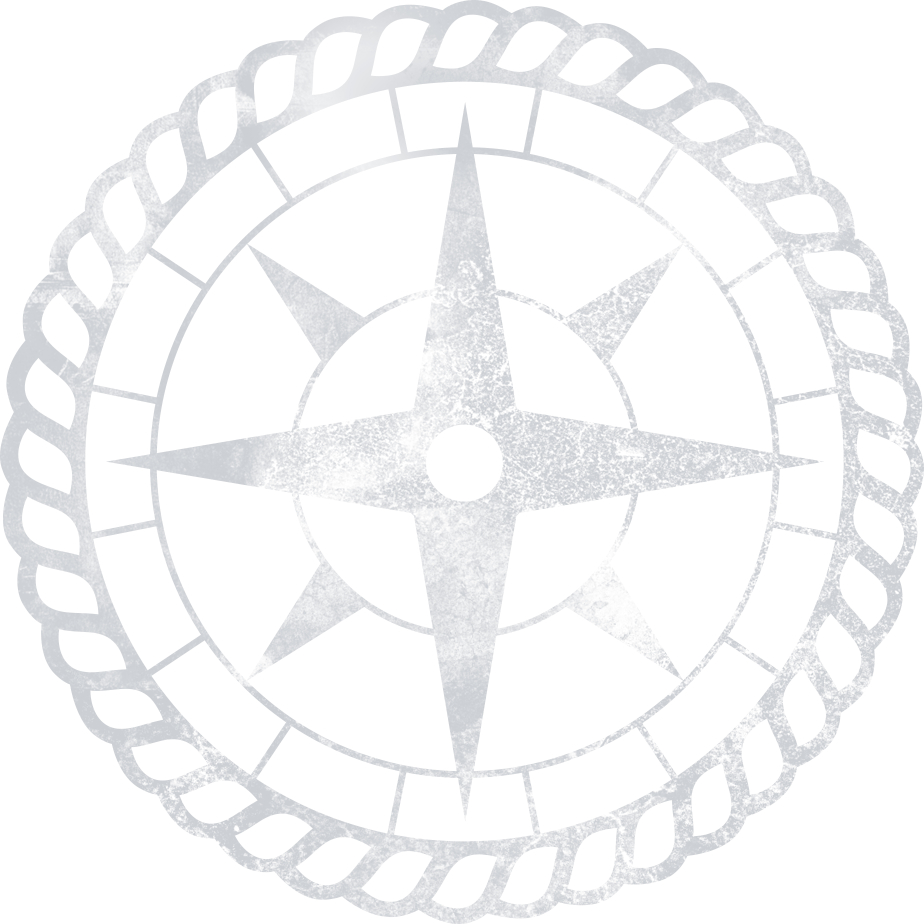
Getting Started
If you are ready to enroll on a course click the enroll button next to the course you wish to select or you can enroll over the phone by speaking with one of our Customer Success Specialists (toll-free) at 866-467-7651.
To secure your spot on a course you must submit an enrollment form and $500 deposit that is applied toward the total cost of the course and includes a $150 non-refundable enrollment processing fee.


